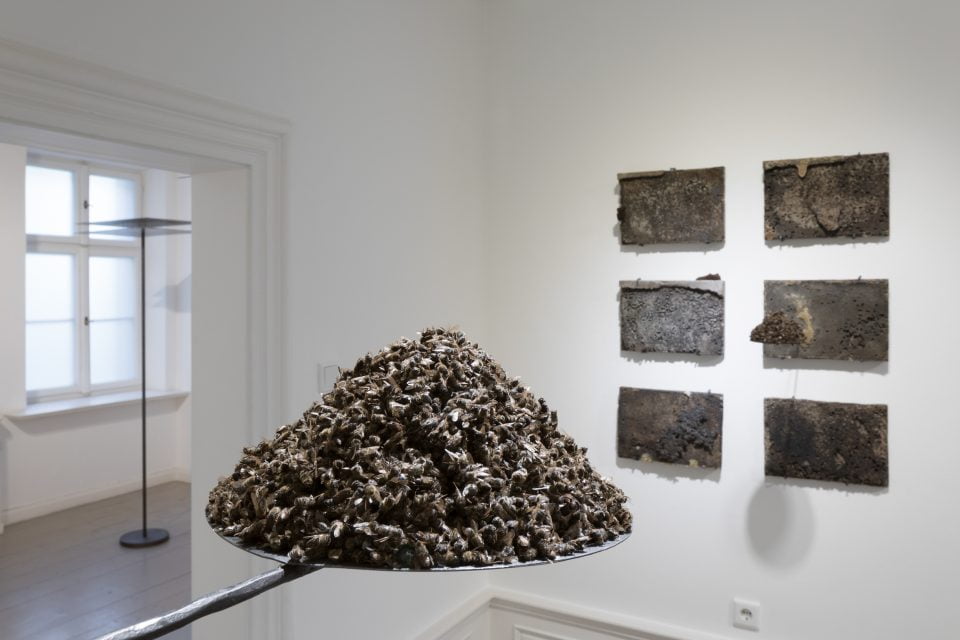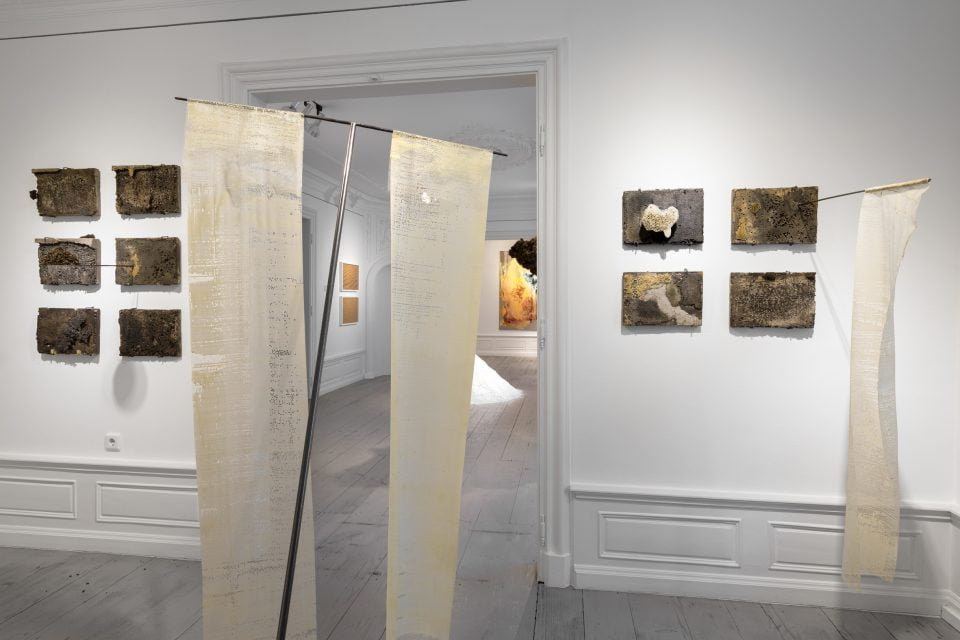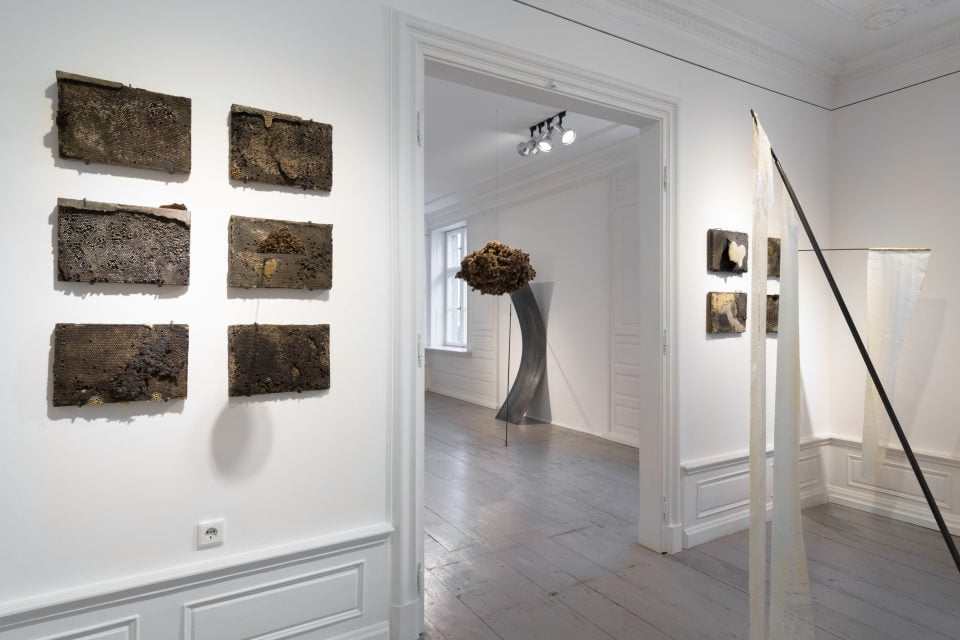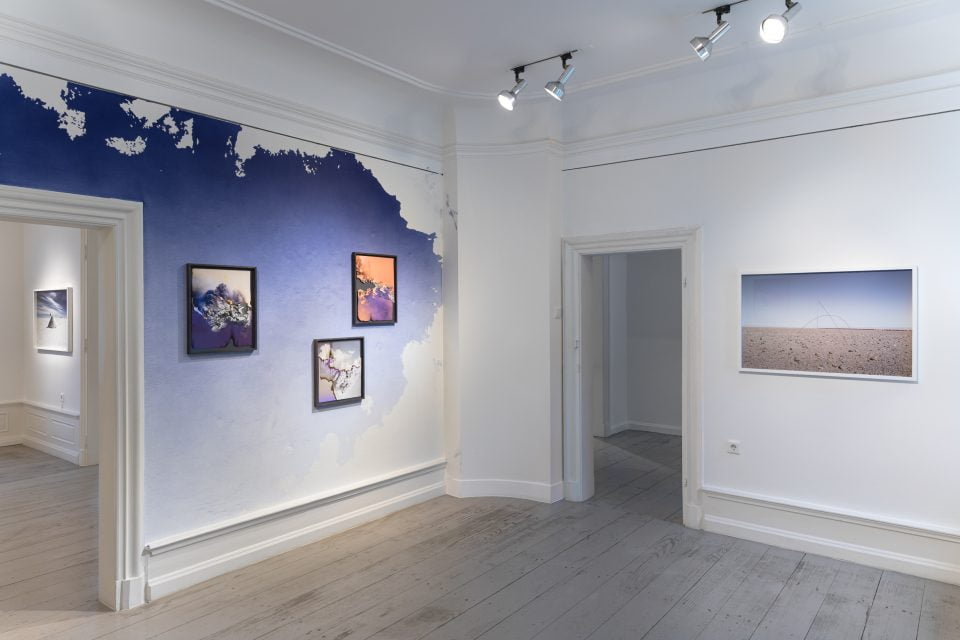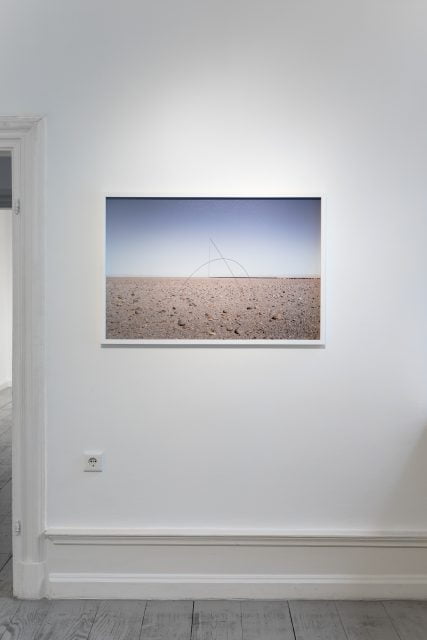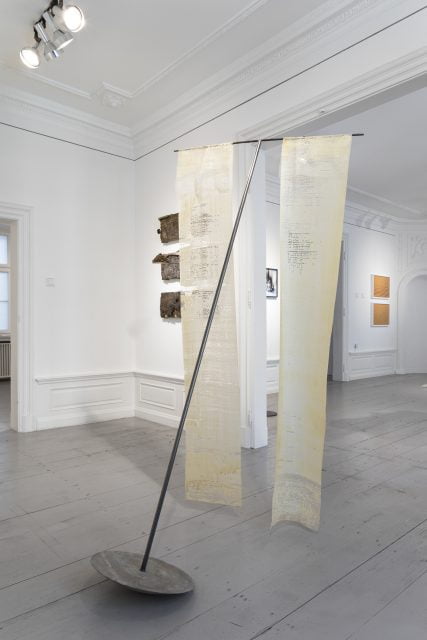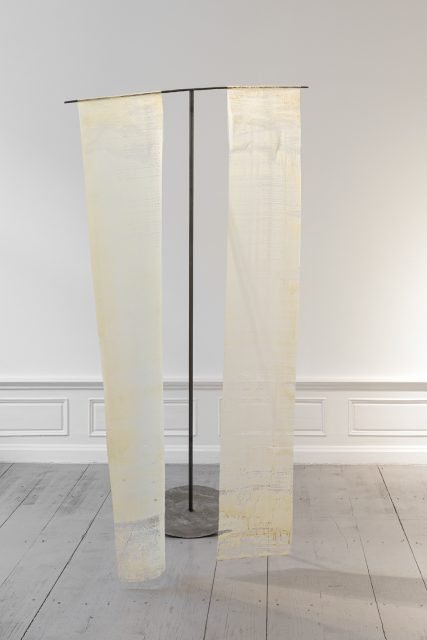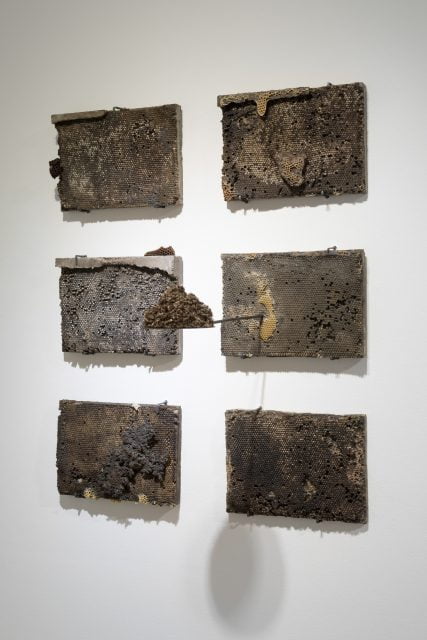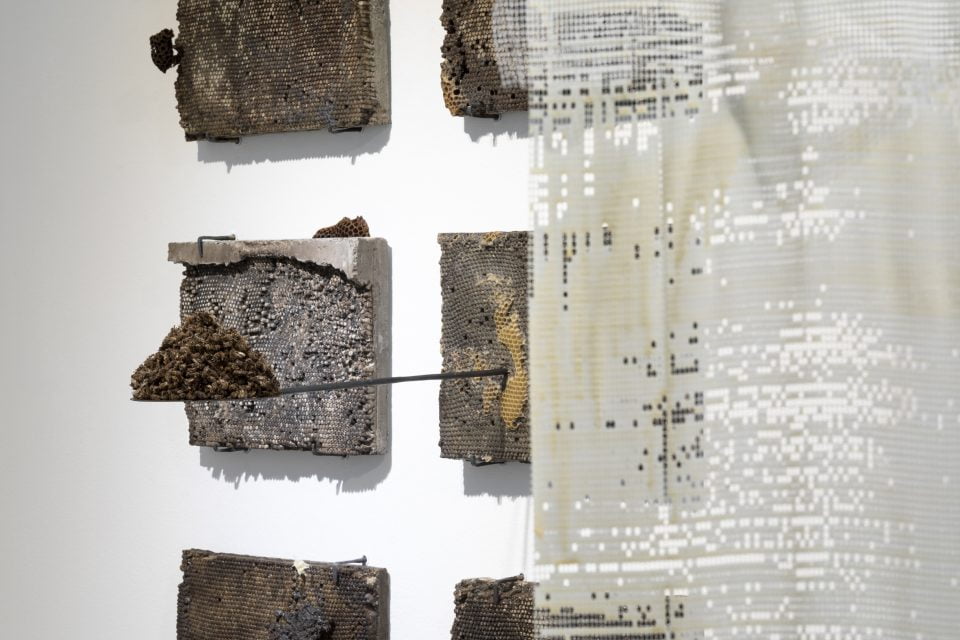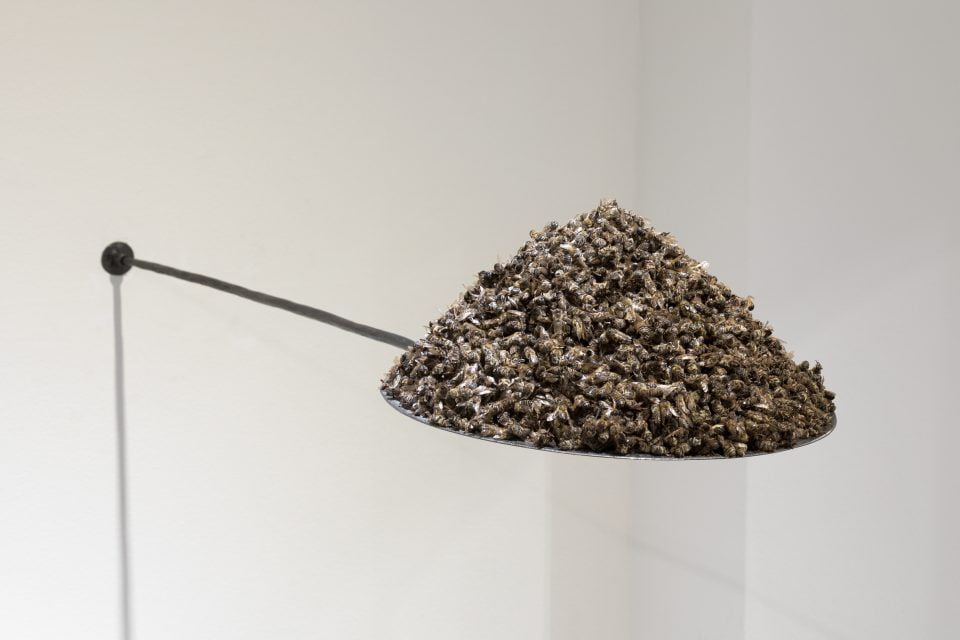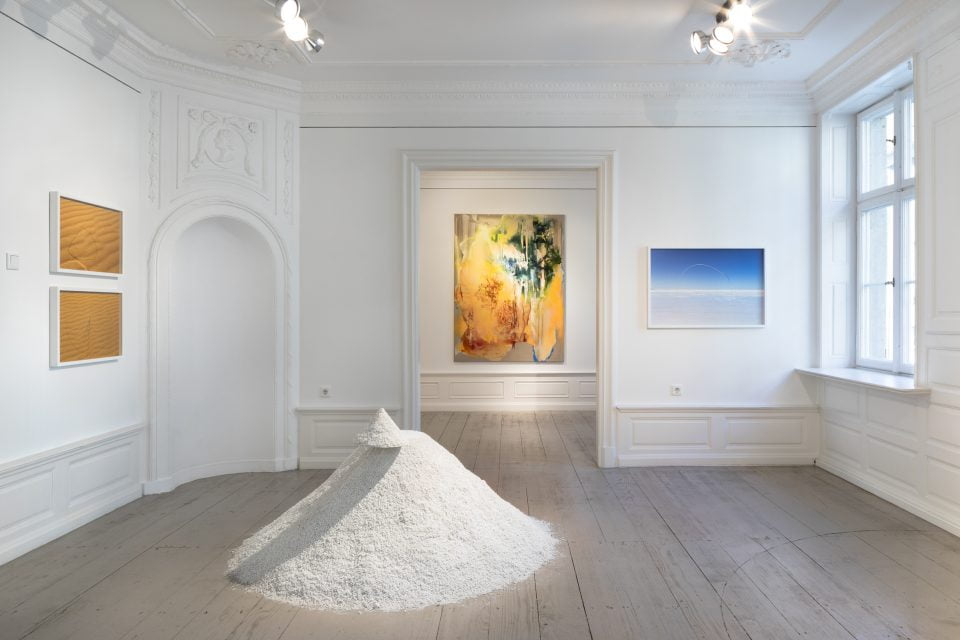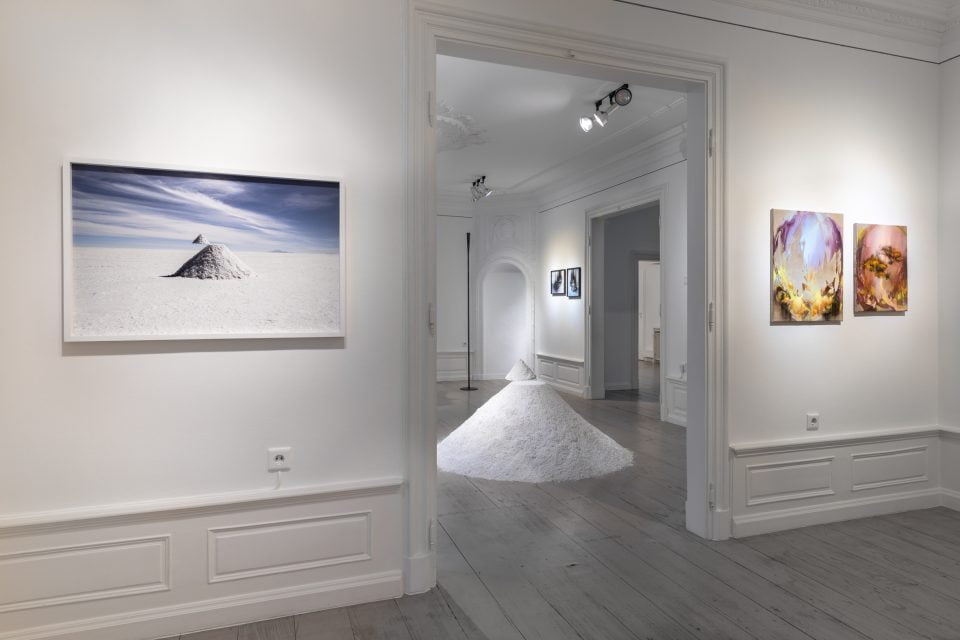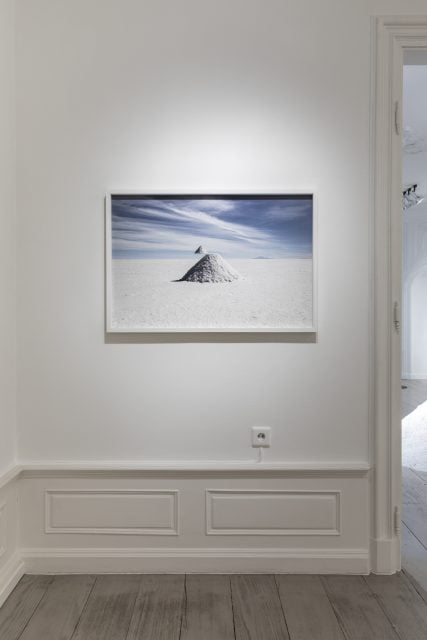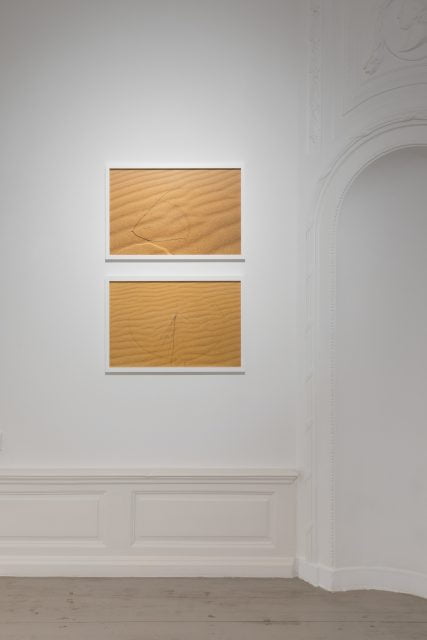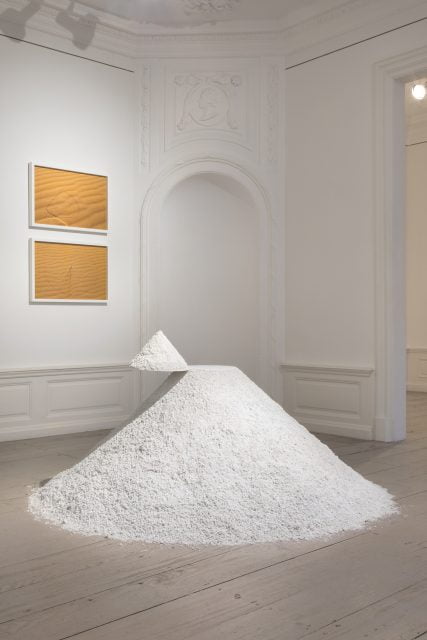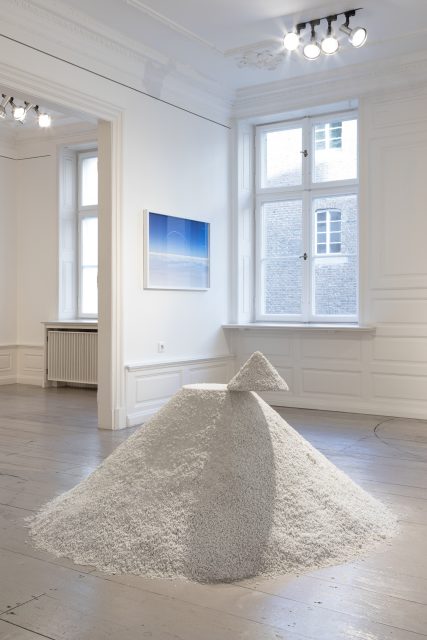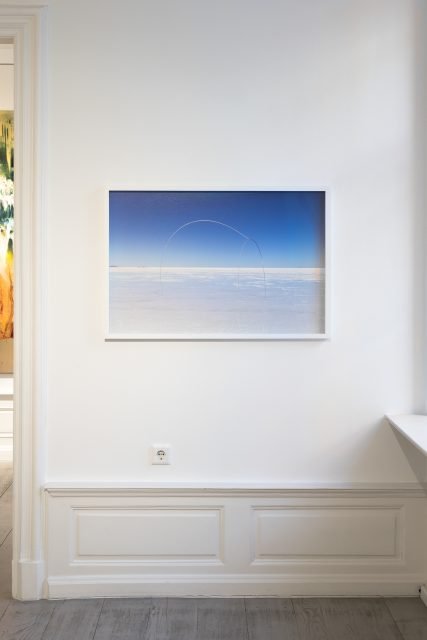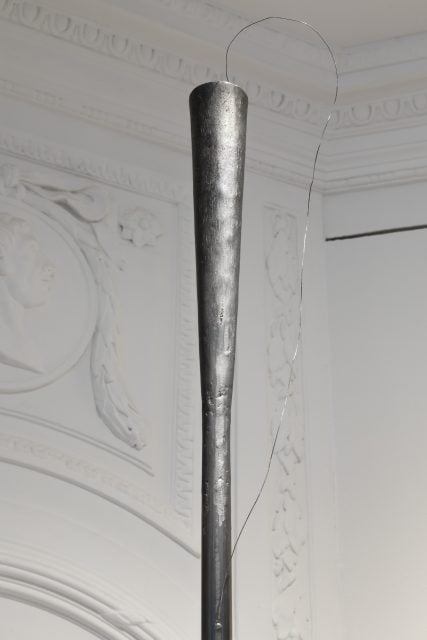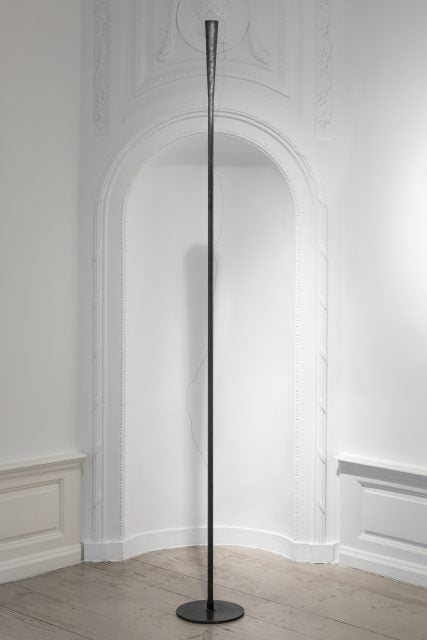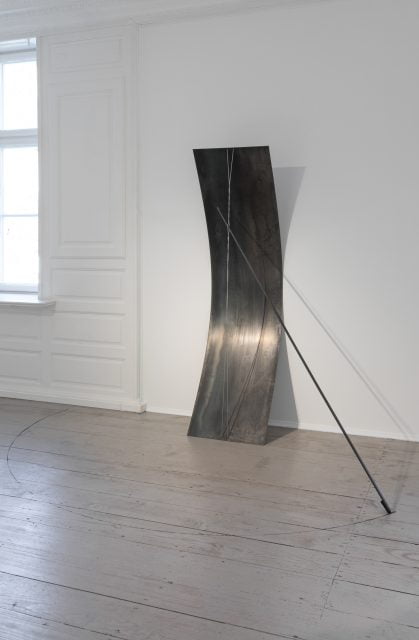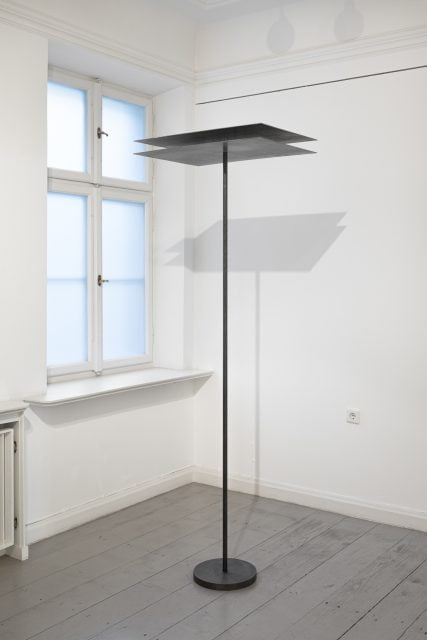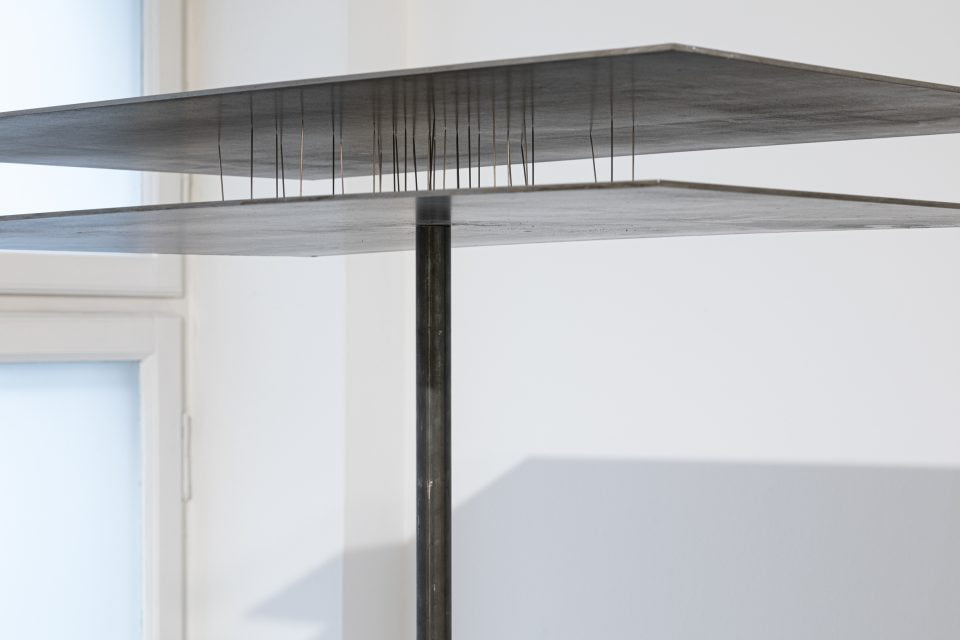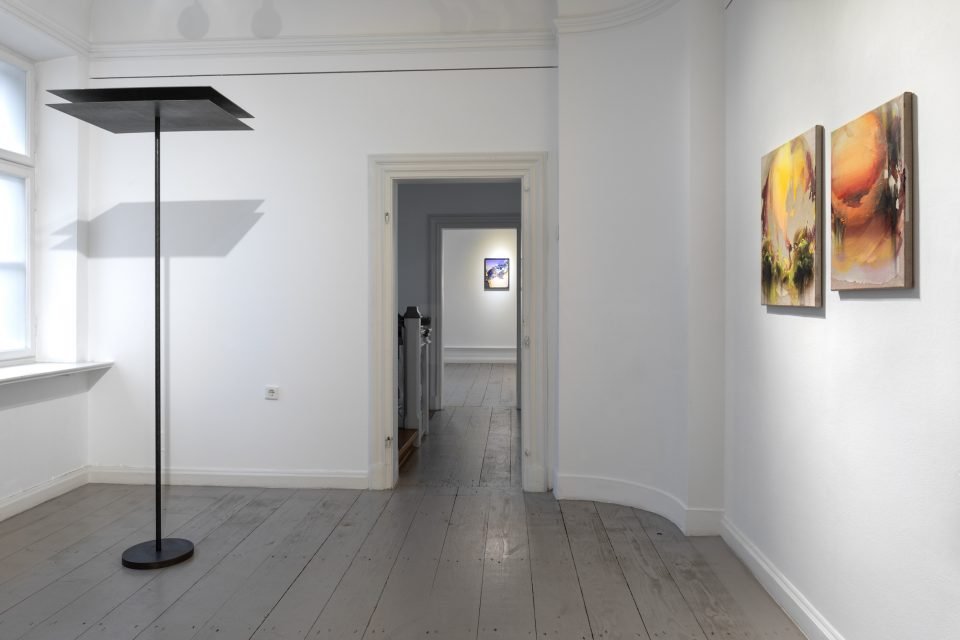About the Inevitable to come
Polish Institute Düsseldorf, 17.02–04.05.2022
Michał Smandek, Angelika J. Trojnarski
curator Monika Szewczyk
coordination Monika Kumięga
The exhibition by Angelika J. Trojnarski and Michał Smandek presented at the Polish Institute in Düsseldorf is based on building a feeling of unease with apparently calming means. Beautiful paintings, aesthetic photographs, minimalist − mobile or immobile − forms, as well as the use of natural (plant or insect-made) materials − all that should make us feel comforted and safe. Yet, it doesn’t. Why? Perhaps, because we carry the anxiety within us? The scientists have no doubt that the end of the world understood as the end of life on Earth is inevitably going to come. The question is: when? Michał Smandek and Angelika J. Trojnarski, each one within their own area, meticulously study relations between culture and nature.
Angelika’s paintings, with their sophisticated structure and vibrant colours, transmit her enthusiasm and awe towards the world and nature, as well as the artist’s optimism and hope that the status quo can be preserved. However, they are not free from the conscience of crisis. In subtle, oneiric canvases, a careful viewer will find an afterimage of dystopia. The power of her paintings resides in her method of creating surfaces – contrasted with how impressive they look in the end − by applying, removing, and fragmenting alternate layers, and also in accepting small inconsistencies, stains, pieces of paper sticking to the surface, and parts of canvas devoid of paint. This might feel nonchalant, if it weren’t for the extremely delicate character of those interventions that infuse Angelika’s paintings with a very individual touch, introducing tension into a seemingly perfect world. In her Pyrocene collage series inspired by wildfires in Australia and California, Angelika goes a step further and exposes her works to actual fire. Nonetheless, these dramatic artworks are stunningly beautiful, just like a cloud of pollen blown from prickly thistle flowers. The artist approaches reality like a detached researcher, and her scientific toolbox/lab is art, which makes the aesthetic context so important. The Hungarian Nobel Prize winner, Albert Szent-Gyorgyi, said that scientific discoveries consist of “seeing what everybody has seen and thinking what nobody has thought”. The same can be said about works of art.
Michał Smandek observes natural phenomena with methodical calmness, in order to slightly disrupt the process going on before his eyes. The dichotomy between nature and culture in his works, in a logical and obvious manner, stems from his experience as an artist-beekeeper and artist-traveller. Usually, beekeepers do not consider interfering with the hive’s “architecture” or asking questions starting with what if? − this is the artist’s domain. As an artist, Michał has the humility of a sage, allowing others to have the last word, accepting the individuality of insects as co-authors of his works. He leaves us uncertain of which parts are a recording of reality, documented by nature, and which have been created by artistic intervention; he makes us aware of the “high artistic coefficient” and the importance of sensitivity in the process of creation. There is something extremely empathetic and conscious in his approach: a moderate message, leaving space for the viewer to complete it with their own sensitivity and careful observation of the world around. His minimal interventions do not break the order, but rather make us aware of the delicate boundary between nature and human activity. When we overstep those bounds, a disaster may ensue; his works, under their sophisticated, minimalist forms, are its harbinger.
Monika Szewczyk
photo Hanne Brandt

